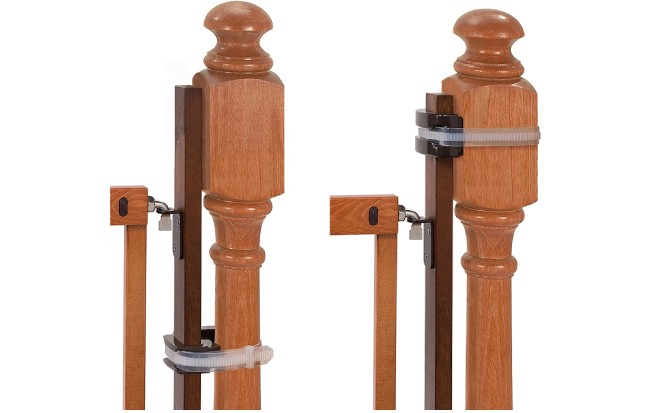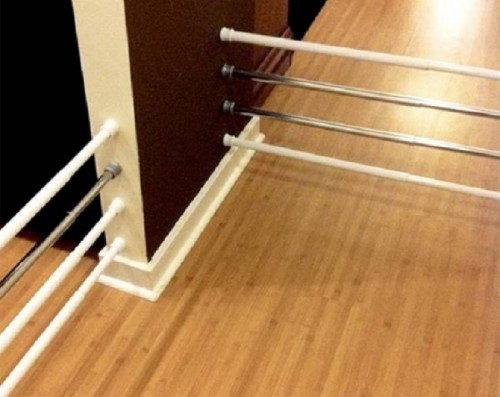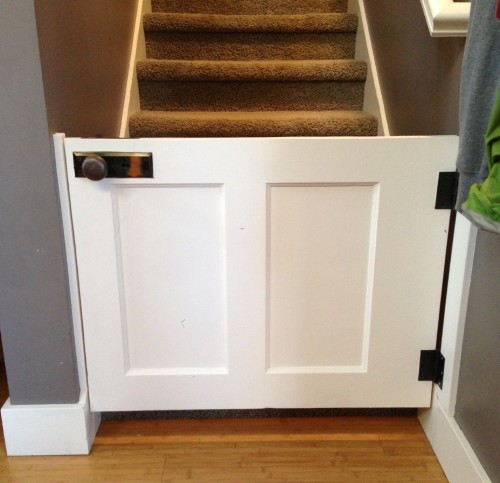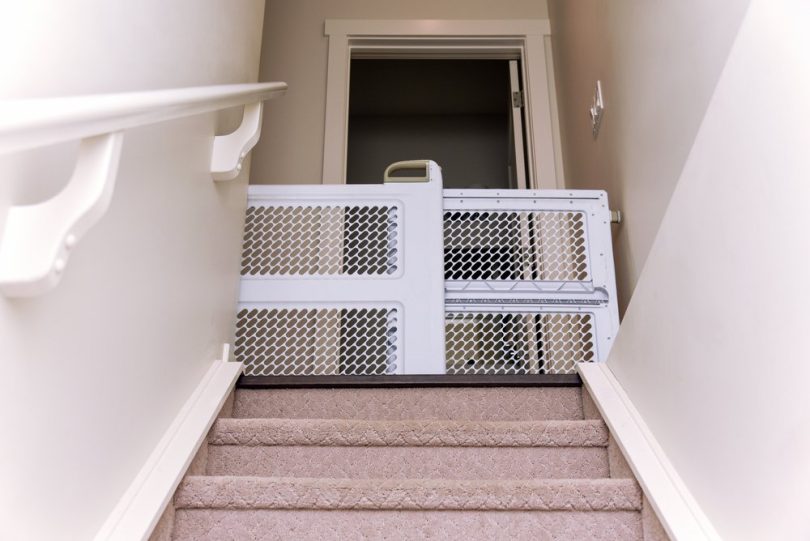Your baby is mobile and babyproofing is needed. Now is the time to get it done! After all, when your little one starts crawling, they’ll head straight for the stairs!
One of the first things you should do is block off stairways, ideally before your baby tries to scoot. There are many options to choose from when it comes to baby gates. Stairway extension kits and half doors can be used to create baby barriers.
Here are some suggestions for blocking stairways without a baby gate.
Methods of Blocking Stairs Without a Baby Gate
Method 1: Safety covers
How it’s done
Step 1: First, you have to open the safety covers carefully.
Step 2: Stretch these safety covers to their full length.
Step 3: Place the safety covers right in front of the entrance of the stairs and secure them with a nail and attach it to the corner of the cover.
Step 4: Tighten all the bolts and nuts for safety purposes.
Pros
- Helps prevent children from stepping on the stairs
- Covers the entire entrance of the stairs to avoid any severe incidents with the kids
- The soft texture protects the children from getting any bruises or cuts
Cons
- Not very reliable
- May last only for 2-3 months
- Lightweight
- The soft texture may be damaged easily
Method 2: Stairway separation kits
How it’s done
Step 1: Take all the pieces of the stairway separator kit.
Step 2: Place each piece of the stairway separator on the side of the stairway.
Step 3: Secure the stairway with nuts, bolts, and other tools.
Step 4: Ensure that all the nuts and bolts are tightly screwed once you are done.
Pros
- Makes home safer for children
- Gives a unique and modern look
- Comes in a hard texture
- Can stay good for months
Cons
- Can be expensive
- Your kids may get hurt by the hard texture of the stairway separator
Method 3: Stair barriers

How it’s done
Step 1: Take the stair barrier and measure the length of the stair with it.
Step 2: The length of the stair barrier and the stair must be the same.
Step 3: Place the stair barrier horizontally or vertically as per the design of the stairway.
Step 4: Secure the barrier with nuts and screw them tight.
Pros
- Prevents kids from accessing the stairs
- Best way to avoid dangerous incidents
- Makes home safer for children
- More stable and reliable than other stair blockers
Cons
- Expensive
- Can be complex for DIY installation
Method 4: Tension rods

How it’s done
Step 1: Firstly, you have to dig holes adjacent to each other at the entrance of the stairs.
Step 2: Now carefully secure the rod holder in these holes with nuts and bolts.
Step 3: Now place the tension rods in these rod holders.
Step 4: Ensure that the rods are correctly placed and secured with tightly screwed bolts.
Pros
- Hard texture and strong structure
- Prevent kids from falling and support them in standing up or sitting down
- Make the house look proper and secured
- Made of excellent and thick materials
Cons
- Installation rods can be complex work
- Not 100% accident-proof
Method 5: Half door

How it’s done
Step 1: Measure the height of the entrance of the stairs.
Step 2: Check the measurement of the entrance and the half-door by putting it in place.
Step 3: Make sure that the entrance and the door must be of the same height.
Step 4: Place one side of the door with nails and screw them tight.
Step 5: Lock the door from the bottom and keep the upper part of the door open.
Pros
- Prevent children from getting on the stairs
- Help children see who is coming down or going up the stairs but block them from entering independently
- A reliable way to decrease the chances of accidents with kids
Cons
- Expensive
- May increase the chances of accidents for adults
Things to Do When Babyproofing Your Stairs
1. Position the gates correctly
It is important that the gates at the top only open away from the steps.
2. Carry out a safety check
Your gate is frequently opened and closed. Though it is designed specifically for this purpose, you should regularly inspect its hardware and integrity. A loose screw, a splintered piece of wood, or any other problem could impact safety. They should be addressed immediately.
3. Take the gates out at the correct time
After your child has reached a certain age, remove your baby gates.
A baby gate becomes a hazard when your baby begins climbing. If you have vertical bars to keep your child from climbing or securing the mount, you should take them down once the child is two.
4. Slat width should be checked
Do your banisters or railings have vertical slats? When there is a danger that your kid’s head will get jammed or that they might even fall through, consider installing a net rail.
5. Carpet the stairs
This is a perfect time if you’ve ever wanted to carpet your stairs. As your baby gets older, wood could become dangerously slippery, and the carpet will provide cushioning.
Things Not to Do When Babyproofing Your Stairs
1. Keep your gate on the ground and don’t raise it
It’s surprising how kids can fit through small spaces, and they’re very crafty. The need for a taller gate is common, but a common mistake is to place it a few inches above the ground.
Although you’ll gain height, you’ll also increase instability and give your child the chance to fall down. When buying a baby gate, make sure your child can be restrained by it.
2. Do not use a gate with a pressure mount
A pressure bar is sometimes used to secure gates to walls. They’re useful when moving from one room to another but shouldn’t be used on stairs. Gates of this type are designed to be moved frequently and fall more often if they are pushed or pulled
3. Pet gates shouldn’t be used
Your basement may have old pet gates, which you might consider repurposing. Safety standards are rigorously tested on baby gates, so they are the safer option.
4. Procrastination is not an option
You leave too much room for error by waiting too long before installing the baby gate. You should babyproof your home before your baby shows any signs of mobility.
FAQs
1. What do I need to do to keep my kids safe on open stairs?
Ans. Barriers can be made from plexiglass. Stairs can be carpeted, or anti-slip mats can be added.
2. Does a baby gate need to swing in or out?
Ans. A safety gate should never open into a hazard.
3. Would a baby gate be necessary at the foot of the stairs?
Ans. The top of the stairs is the most critical spot for safety gates, followed by the bottom.









Leave a Comment